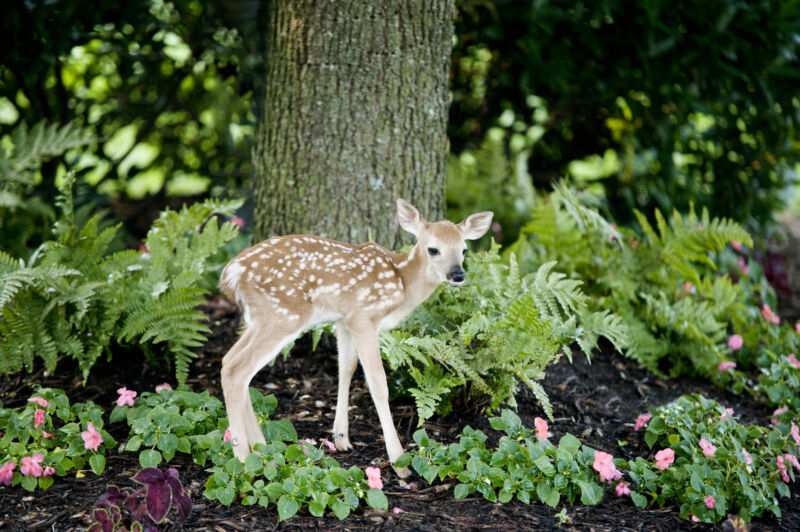
On Wednesday, the US Department of Agriculture released some rather disturbing news: a survey of wild deer populations has found that large numbers of the animals seem to have been exposed to SARS-CoV-2, the virus that causes COVID-19. The finding indicates that there’s a very large population of wild animals in North America that could serve as a reservoir for the virus, even if we were to get its circulation within the human population under control.
Probably not an error
Why check deer in the first place? The USDA’s Animal and Plant Health Inspection Service is studying a variety of species “to identify species that may serve as reservoirs or hosts for the virus, as well as understand the origin of the virus, and predict its impacts on wildlife and the risks of cross-species transmission.” This is the same group that identified the spread of the virus to a wild mink in 2020.
Using a captive deer population, the USDA had already determined that deer can be infected by the virus, although the animals display no symptoms. So although direct interactions between deer and humans are relatively limited, checking the wild populations made sense. The USDA checked populations in a total of 32 counties in four different states, obtaining blood samples to look for antibodies specific to SARS-CoV-2.
The antibodies were quite common, ranging from a low of 7 percent of the samples in Illinois to a high of 60 percent in Michigan. All told, a third of the deer tested had antibodies against SARS-CoV-2.
The USDA also took reasonable precautions to make sure the data was accurate. Agency scientists tested samples that were around prior to the pandemic to confirm that the rate of false positives was low (it was). The researchers also ran antibody tests using two different machines to make sure the conclusion wasn’t due to some sort of hardware problem (it wasn’t). So in all likelihood, a large number of deer have been exposed to the virus.
What does that mean?
By now, we’ve spent a lot of time studying how SARS-CoV-2 spreads, and prolonged exposure to respiratory droplets is the most efficient method. There aren’t many contexts in which this kind of exposure is likely to be happening between humans and wild deer. It’s possible that these numbers are generated by a rare transmission to deer that is followed by extensive spread within the population. Or another species, possibly a domesticated one, might be carrying the virus between humans and deer.
Understanding how the transmission takes place will be critical to determining whether the existence of a large viral reservoir in deer poses a threat to humans. While there’s been no indication of a human picking up an infection from deer, the virus is so common in the US population that it would be difficult to rule out human-to-human transmission as an alternative explanation for any cases. Still, if the US ever does manage to control the spread of the virus, being aware of any alternative routes of infection would be a good idea.
Another issue is that the virus can pick up mutations that help it adapt to deer as a host and prove dangerous to humans if the virus jumps back to humans. So far, the one case where this has been studied with SARS-CoV-2 is a strain that is adapting to mink. That virus is becoming less efficient at infecting human cells, but it’s also changing in ways that make it less susceptible to the immune response generated by vaccines or prior infections. There is, of course, no reason to think that a deer-adapted SARS-CoV-2 would follow a similar trajectory.
In any case, both of these issues—the presence of a difficult-to-control reservoir and the prospect for further evolution of the virus—means that it will be important to understand how the virus is reaching the deer population and whether it’s spreading between deer.
https://arstechnica.com/?p=1783956

